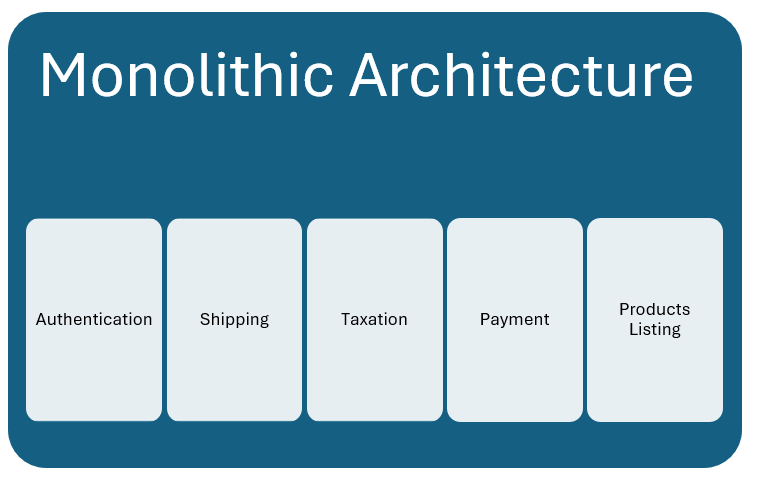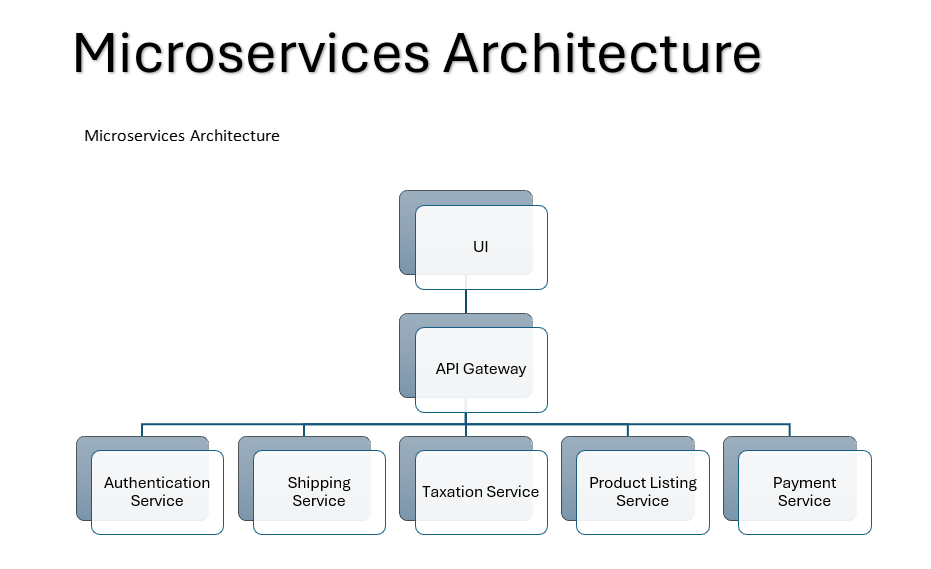Understanding Microservices Architecture: Benefits and Challenges Explained
Microservices architecture is a transformative approach in backend development that has gained immense popularity in recent years. To fully grasp the advantages of microservices, it is essential first to understand monolithic architecture, as microservices emerged primarily to address its limitations. This article will delve into the differences between monolithic and microservices architectures, the benefits and challenges of adopting microservices, and how they function in a modern development landscape.
What is Monolithic Architecture?
Monolithic architecture is a traditional software development model where an application is built as a single, unified unit. This means all components of the application, such as user interface, business logic, and database access, are intertwined within one codebase. For instance, if we consider an application like eCommerce Web Application, all functionalities, including payment processing, user authentication, and products listings, would be combined into one single repository.
While this model is intuitive and easier to manage for small projects or startups, it has significant drawbacks. The primary issues include:
- Redeployment Challenges: Any minor change in one component necessitates redeploying the entire application.
- Scaling Limitations: Scaling specific functionalities, like authentication, is not feasible without scaling the entire application.
- High Inter dependencies: Multiple developers working on the same codebase can lead to conflicts and dependencies that complicate development.
Example : eCommerce Web Application

The Shift to Microservices
As organizations like Netflix began to face the limitations of monolithic architecture, they sought solutions that could enhance flexibility, scalability, and maintainability. This led to the adoption of microservices architecture, which involves breaking down applications into smaller, independent services. Each service functions as a standalone unit, enabling teams to develop, deploy, and scale them independently.
Defining Microservices Architecture
Microservices architecture is characterized by several key features:
- Independently Deployable Services: Each microservice can be deployed independently without affecting the entire application.
- Loosely Coupled Components: Services interact with each other through well-defined APIs, minimizing dependencies.
- Technology Agnostic: Different services can be built using different technologies, allowing teams to choose the best tools for their needs.

Create new independent projects and separate deployment pipelines for the following services in an eCommerce web application:
- Authentication Service
- Shipping Service
- Taxation Service
- Product Listing Service
- Payment Service
These services can be accessed in the UI through an API gateway.
Benefits of Microservices Architecture
Transitioning to microservices offers numerous advantages that can significantly improve development workflows and application performance:
1. Independent Deployment
One of the most significant benefits is the ability to deploy services independently. For example, if a change is made to the authentication microservice, it can be updated without redeploying the entire application. This minimizes downtime and ensures that other services remain operational.
2. Flexible Scaling
With microservices, scaling becomes much more manageable. If there is an increase in user activity, developers can scale specific services, such as the payments service, without impacting others. This flexibility allows for efficient resource management and cost savings.
3. Technology Flexibility
Microservices architecture enables teams to use different programming languages or frameworks for different services. For instance, a team might choose Python for the authentication service while using Java for payment processing, optimizing performance based on service requirements.
How Microservices Communicate
Microservices need to communicate effectively to function as a cohesive application. There are several common methods for interaction:
1. Synchronous Communication
In synchronous communication, microservices communicate through API calls. Each service exposes an API endpoint, allowing other services to send requests and receive responses. For example, the payments service might send a request to the listings service to verify availability.
2. Asynchronous Communication
Asynchronous communication can be achieved using message brokers, such as RabbitMQ or Apache Kafka. In this model, a service sends a message to the broker, which then forwards it to the intended recipient service. This method decouples services and enhances scalability.
3. Service Mesh
A service mesh, like Istio, can be utilized to manage service-to-service communications, providing advanced routing, load balancing, and monitoring capabilities. This approach is particularly effective in complex microservices environments.
Challenges of Microservices Architecture
Despite its advantages, microservices architecture is not without challenges. Organizations must be aware of potential drawbacks:
1. Management Overhead
With multiple microservices, management complexity increases. Each service requires its deployment pipeline, monitoring, and maintenance, leading to higher overhead costs.
2. Infrastructure Costs
The infrastructure needed to support microservices can be expensive. Organizations must invest in container orchestration tools, like Kubernetes, and ensure robust networking to facilitate communication between services.
3. Development Complexity
While microservices can simplify specific tasks, they also introduce new complexities. Developers must manage inter-service communication, data consistency, and transaction management across independent services.
When to Use Microservices
Microservices architecture is generally more beneficial for larger organizations with complex applications. It is particularly suitable when:
- You have a large application with distinct functionalities.
- Your teams are sizable enough to manage individual microservices.
- Rapid deployment and scaling are critical for your business.
- Technology diversity is a requirement across services.
Microservices architecture presents a modern approach to application development, offering flexibility, scalability, and independent service management. While it comes with its set of challenges, the benefits often outweigh the drawbacks for larger organizations. As businesses continue to evolve, understanding when and how to implement microservices will be crucial for maintaining competitive advantage in the digital landscape.
By embracing microservices, organizations can enhance their development processes, improve application performance, and respond more effectively to changing market demands. Whether you are considering a transition to microservices or just beginning your journey, it is essential to weigh the pros and cons carefully and adapt your approach to meet your specific needs.


Thank you for the distinctive explanation of monolithic structure. Understanding its challenges, together with redeployment problems, scaling boundaries, and excessive interdependencies, truly highlights the complexities worried in coping with a unified software.
On a related be aware, for those exploring instructional possibilities, IPER College Bhopal is an extremely good desire in Bhopal for pursuing BBA and BCom. It’s known for its robust packages and supportive getting to know environment.
Thanks again for the valuable insights!